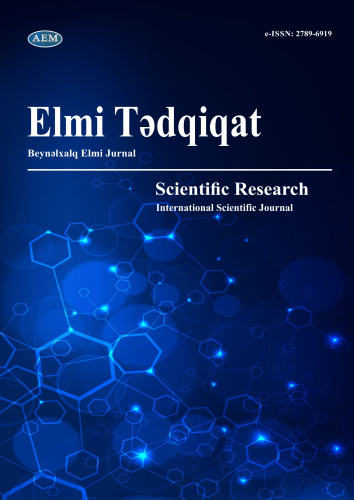DOI: https://doi.org/10.36719/2789-6919/33/116-120
Səkinə Əbilhəsənli
Bakı Dövlət Universiteti
magistrant
ebilhesenlisekine@gmail.com
PAMBIQ BİTKİSİNİN ZƏRƏRVERİCİLƏRİ VƏ QARŞISININ
ALINMASI YOLLARI
Xülasə
Dünya əhalisinin həyəcan verici sürətlə artımının öhdəsindən gəlmək üçün kənd təsərrüfatında məhsuldarlığın artırılması və daha az tullantı tələb olunur. Son illər respublikamızda ərzaq təhlükəsizliyinin təmin edilməsinə, ekoloji təmiz kənd təsərrüfatı məhsullarının istehsalına böyük diqqət yetirilir. Ekoloji cəhətdən təmiz kənd təsərrüfatı məhsullarının əldə edilməsi kənd təsərrüfatı praktikasında pestisidlərin istifadəsinin minerallaşması ilə birbaşa bağlıdır. Yoxsulluğun azaldılması bir çox ölkələrdə kənd təsərrüfatında həm məhsul yığımından əvvəl, həm də məhsul yığımından sonrakı mərhələdə böyük iqtisadi itkilərə səbəb olan çoxsaylı həşərat zərərvericiləri tərəfindən əngəllənir. Bu zərərvericilər pambıq bitkisinin inkişafına mənfi təsir göstərir bəzən məhv olmasına gətirib çıxardır. Əvvəllər müəyyən bir müddət ərzində bu həşərat zərərvericilərinin əksəriyyəti geniş spektrli kimyəvi maddələrin istifadəsi ilə müxtəlif dərəcədə idarə olunurdu. Uzunmüddətli istifadə nəticəsində müqavimətin artması, torpağın və səth sularının çirklənməsi, qidada və ətraf mühitdə qalıqlar, insan sağlamlığı və biomüxtəliflik üçün risklər və s. nəzərə alınmaqla, bu kimyəvi maddələrin nəzarət taktikası kimi qeyri-seçkilikdən istifadə edilməsi artıq davamlı deyil. Buna görə də, yalnız səmərəli, eyni zamanda davamlı və ətraf mühitə daha uyğun olan nəzarət taktikaları və yanaşmalarına dair tələblər istifadə edilməlidir.
Açar sözlər: kənd təsərrüfatı, xam pambıq, əkin topaqları, pestisidlər, bitki zərərvericiləri
Sakina Abilhasanli
Baku State University
master student
Cotton plant pests and methods of prevention
Abstract
Coping with the alarming rate of world population growth requires increased agricultural productivity and less waste. In recent years, great attention has been paid to ensuring food safety and the production of ecologically clean agricultural products in our republic. Obtaining environmentally friendly agricultural products is directly related to the mineralization of the use of pesticides in agricultural practice. Poverty reduction is hampered in many countries by numerous insect pests that cause huge economic losses in agriculture at both the pre-harvest and post-harvest stages. These pests have a negative effect on the development of the cotton plant and sometimes lead to its destruction. In the past, most of these insect pests were controlled to varying degrees by the use of a wide range of chemicals over a period of time. Increased resistance due to long-term use, contamination of soil and surface water, residues in food and environment, risks to human health and biodiversity, etc. given that the indiscriminate use of these chemicals as a control tactic is no longer sustainable. Therefore, only requirements for control tactics and approaches that are efficient, yet sustainable and more environmentally friendly should be used.
Keywords: agriculture, raw cotton, crop stubble, pesticides, plant pests

